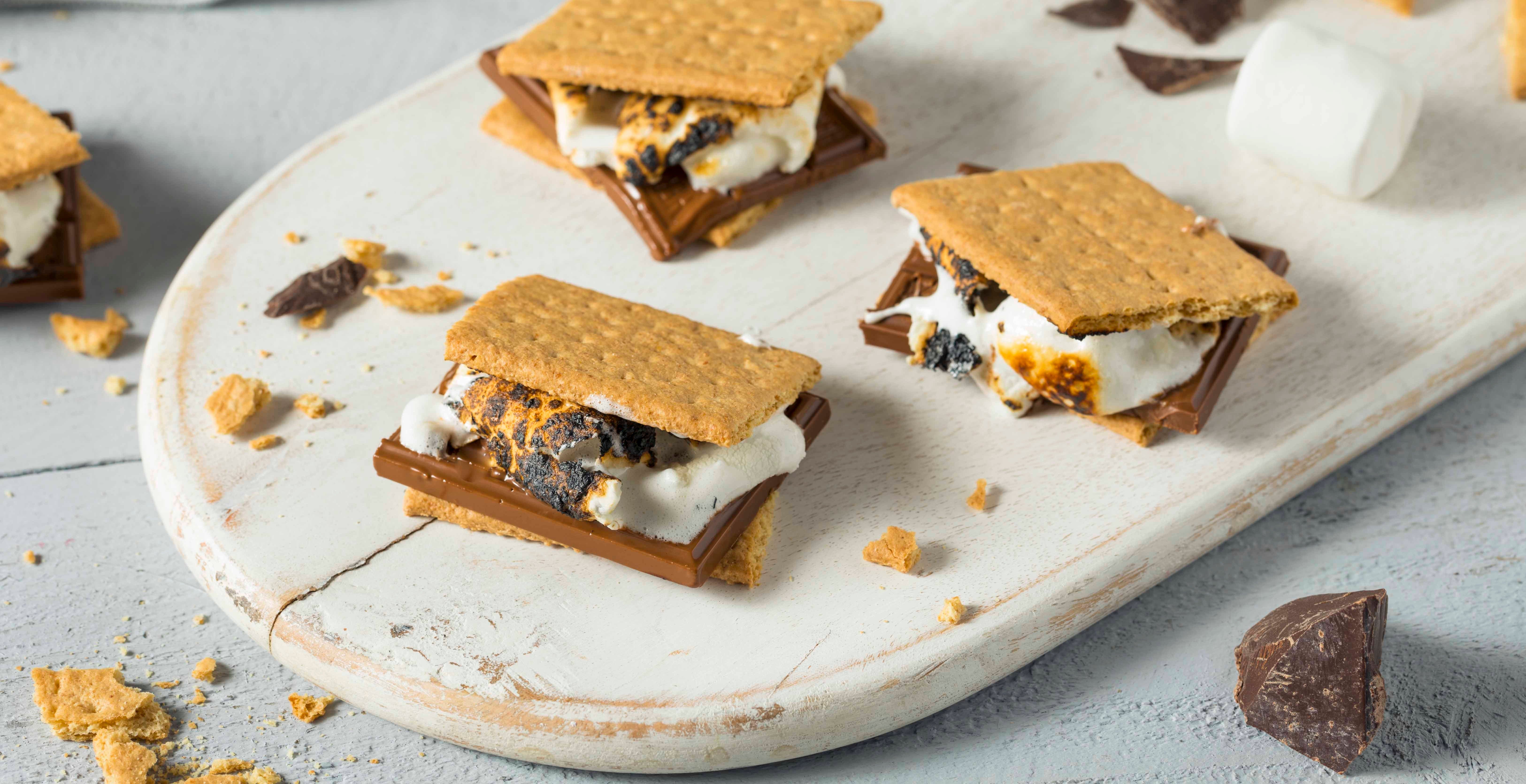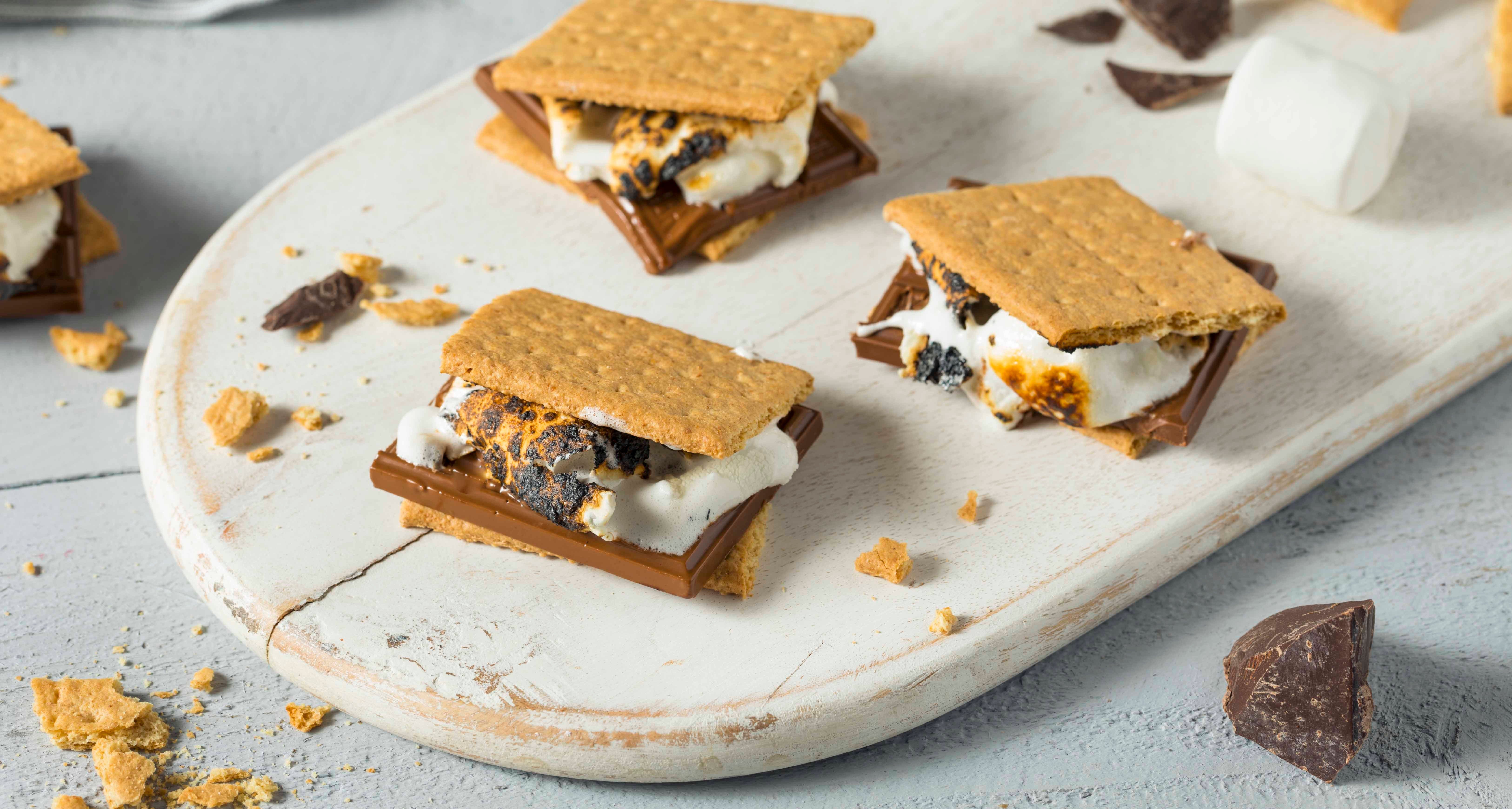Healthy Camping Food Hacks


There’s something about eating food around a fire or at a picnic table that makes camping an activity even the most indoorsy people can appreciate. Of course, the fact that s’mores, hot dogs, and the somehow always-present bag of campsite potato chips that are regular camping fare probably contributes to this sentiment. Believe it or not, making healthy food choices when camping is surprisingly easy; all that’s needed is a small amount of organization and prep (nothing too involved, after all, it’s still your vacation.) Just don’t forgo your favourite treats altogether, they’re an integral part of the camping experience when enjoyed in moderation!
Be the camping queen of convenience
If you’re someone who normally enjoys cooking every meal from scratch take note: For minimum fuss and maximum relaxation, it’s totally worth it to bend the “no-packaged foods” rule when you’re camping. Liquid eggs in a carton, biscuit mix, canned soups and chili, ramen noodles, and cut-up vegetables can all be used to make quick and nutritious meals with very little notice or equipment. Keep a few packages of prepared salsa, hummus, tzatziki and baba ganouj in the cooler for when the chips come out (or use some of those pre-cut veggies for dipping.) Serve pretzels, rice crackers, vegetable chips, and rye crackers with nut or seed butter, sliced cheese, dried fruit leathers, and beef jerky.
Batch cook a few simple food items first
Streamline campsite meal prep by batch-cooking a couple of basic recipes before you leave for the trip. For easy breakfasts, whisk together eggs, vegetables and crumbled turkey sausage and bake the mixture in muffin tins for tasty mini-quiches; for an even more filling breakfast tuck mini-quiches into English muffins with a slice of tomato, or thinly slice and roll up into a tortilla with salsa and a slice of cheese. Pancakes and waffles can also be made ahead and reheated, top with fresh fruit, nonfat yogourt, a drizzle of maple syrup, and a sprinkling of toasted nuts or seeds. For all other meals, use versatile ingredients and recipes that have multiple uses such as cooked ground meat or poultry, grain salads, overnight oats, cooked legumes, fruit crisps or crumbles, and tomato sauce.
Add a healthy twist to camping classics
Just because you’re choosing healthier food options doesn’t mean you can’t revisit some of your old favourites, especially when you make a few nutritious (and delicious!) substitutions. If hot dogs and hamburgers are a camping mainstay try serving them with plenty of veggies or a salad on the side. Portobello mushrooms, veggie burgers, and chicken breasts can also be grilled and used in place of more traditional options. Toasted marshmallows are the most iconic camping food of all, you can up the nutritional profile and add a hint of elegance by piling freshly toasted marshmallows on top of fresh fruit (or, coat the fruit in a thin layer of vegetable oil and grill over the fire or propane stove for even sweeter results.)
A little organization goes a long way
When you’re preparing food with minimal equipment and in variable weather it’s important to stay organized (or at least, semi-organized.) Meal planning, or even just rough approximations, can help you plan an effective pre-camping grocery trip, prevent food waste and discourage going over your allotted food budget. Nesting or collapsible mixing bowls, measuring cups and spoons give you the luxury of multi-tasking in the campsite kitchen while also being great space-servers. For easy identification and storage, add flour, biscuit mix, leaveners, spices, and other dry ingredients to resealable bags and label with a permanent marker. Make a big batch of homemade salad dressing, flavoured olive oil or yogourt-based sauce and store in a plastic or silicon squeeze bottle; not only does this result in accident-proof application, the risk of glass breaking and oily dressing going everywhere is null.
